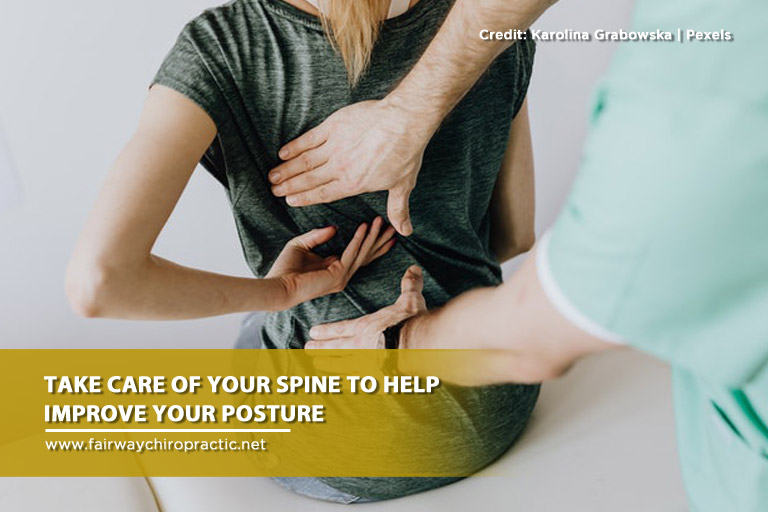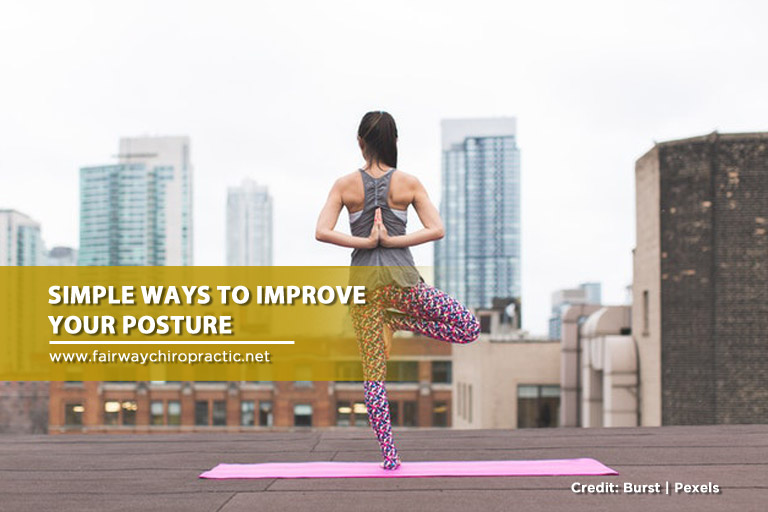The sedentary nature of a vast number of modern jobs has made poor posture, as well as the ailments stemming from it (like lower back pain), more prevalent.
Being locked on your screen for long periods, especially while sitting incorrectly, can take a toll on your body. Poor posture can lead to pain and discomfort on your spine, muscles, and ligaments. Low back pain is one of the most commonly reported work-related problems among individuals. Who knew standing or sitting poorly can impact your health and quality of life?
Preventing pain and improving your health can all be as simple as improving your posture. Good posture doesn’t necessarily mean standing stiff and straight. It means being loose and flexible to accommodate the curves of your spine. You need to keep your:
- Back straight
- Head up, chin in, and looking straight ahead
- Stomach in
- Evenly balanced on your two feet
- Knees straight
What Causes Bad Posture?

It is easy to overlook the way you handle your body. Yet, simple habits, like slouching, can weaken the support your body needs, including your spine, back muscles, hips, shoulder, neck, and abdominal wall.
Poor posture can also be caused by any of the following:
-
Genetics
Some people are born with conditions that affect the shape and structure of their hips and spine, which influences their posture growing up. Fortunately, advancements in the medical field have helped reduce the harmful effects of these conditions on posture.
-
Injury
Injuries on your back, hips, or legs, such as limping, can lower the support your body needs.
-
Overuse
Posture can also change depending on your regular activities. Overuse of our back muscles because of carrying too many heavy objects can cause the person to bend forward, increasing the strain on the lower back.
-
Underuse
While doing too much can strain the body, doing too little can also have a similar effect. This is particularly true for people with a sedentary lifestyle or workers who have to sit inside the office for hours on end. Lack of activity can weaken back muscles, which can affect your ability to maintain a better posture.
What Are the Benefits of Good Posture?
Good posture can have significant effects on your quality of life. Most importantly, it reduces the chances of you developing chronic pains, which is not only inconvenient but can also become expensive to treat.
Other benefits of good posture include:
- Better balance and athletic ability
- Lower risk of injury
- Less fatigue as efficient use of muscles help you conserve energy
- Fewer tension headaches caused by strains on your neck
- Improved breathing by allowing your lungs to expand fully
- Greater Stress Resilience
- Better circulation
Ways to Improve Posture
The advantages of better posture are tremendous; achieving that is simple and requires altering your habits. Here are a few ways to improve posture:
-
Straighten Your Body
The first step to good posture is to become more aware of your body. It may sound easy, but many people get so into what they are doing that they forget to check their posture.
When you slouch, you put a great deal of stress on your muscles, bones, and joints. Instead, straighten up. It can make a big difference not only to your posture but also to your mood. To start:
- Stand straight and tall. Keep your shoulder relaxed and pulled back. Imagine that a string is gently pulling your head upward.
- Stand with your feet about shoulder-width apart and put your weight mostly on the balls of your feet
- Bend your knees slightly
- Tummy in
- Keep your head level and not bent forward
- If you have to stand in one place for a long time, shift your weight from your toes to your heels or from one foot to the other.
-
Sit Correctly

Slumping into your seat, especially while working, can be comfortable, but sitting in that position for an extended period of time can harm your back.
When seated, do the following to keep your posture:
- Straighten your body with the shoulders relaxed. Do not hunch.
- Best to choose an ergonomic desk chair that would allow you to keep both feet rested firmly on the floor. Avoid crossing your legs.
- Bend your knees at a right angle. Keep them level or slightly higher than your hips.
- Sit back in your chair to allow the back of the chair to support your spine.
- Don’t let your head bend forward. Keep your ears aligned over your shoulders.
- Arrange your desk so that your computer screen is at eye level and your keyboard is within comfortable reach to avoid yourself bending forward or backward.
The same can be applied if you have to drive long distances. Make sure that your car seat and headrest are comfortable and in the correct position. Adjust them accordingly to level with the steering wheel, and your feet are planted securely on the pedals.
-
Move Around
Being in the same position for a long time, whether standing or sitting, can result in muscle tension, discomfort, and fatigue. The effects could be worse if you are slouching.
Make it a habit to regularly get up, stretch, and walk around. You can set the alarm to remind you when it’s time to get up and move. It is also better if you work on different tasks so that you can put other muscles to work.
-
Exercise Regularly

Staying active is one of the best ways to improve posture. Even a gentle exercise and stretches, like yoga, or allotting 10 minutes a day for brisk walking can help strengthen your support muscles and improve your posture. If you can, concentrate on strengthening your core muscles (torso and pelvis).
In between work, simple head movements can also help loosen tight neck muscles. Gently moving your head in small circles, front to back, and side to side.
-
Sleep Well
The way you sleep also affects your health. Awkward sleeping positions can only exacerbate back pain. Instead, adjust your position so that you protect and support the natural curve of your back. Avoid sleeping on your stomach since it puts a strain on your spine.
One of the best ways to sleep is to lie on your back as flat as possible. Use a flat pillow to keep your head low relative to your body and place another pillow under your knees to support the natural arch of your back.
You can also check your mattress to ensure that it has the proper support for the different parts of your body and has enough firmness to provide comfort.
-
Beware of “Text Neck”

Text Neck, also known as “Tech Neck,” is a new term to describe the stress injury and pain in your neck due to the excessive use of handheld devices. This problem is common to young people.
The human head typically weighs about a dozen pounds. By bending the neck forward and down to text or use smartphones, e-readers, or tablets, the weight on the cervical spine increases. Medical experts estimate that for every inch the head tilts forward, the pressure on the spine doubles.
Over time, this can lead to poor posture, early weak-and-tear, and even degeneration of the spine.

Better posture and the benefits that come with it don’t need to be difficult. It’s only a matter of awareness of how you sit or stand. Just by following these easy steps, you can make your daily life more comfortable and injury-free.
If you need to get help with achieving better posture, Fairway Chiropractic Centre offers care and treatment for your musculoskeletal system. To request an appointment, call (519) 748-5535.










